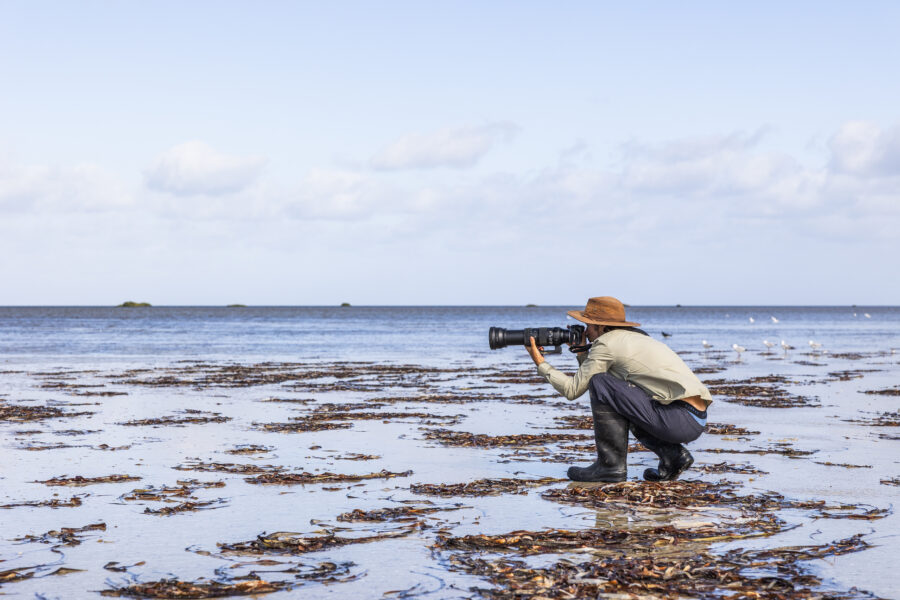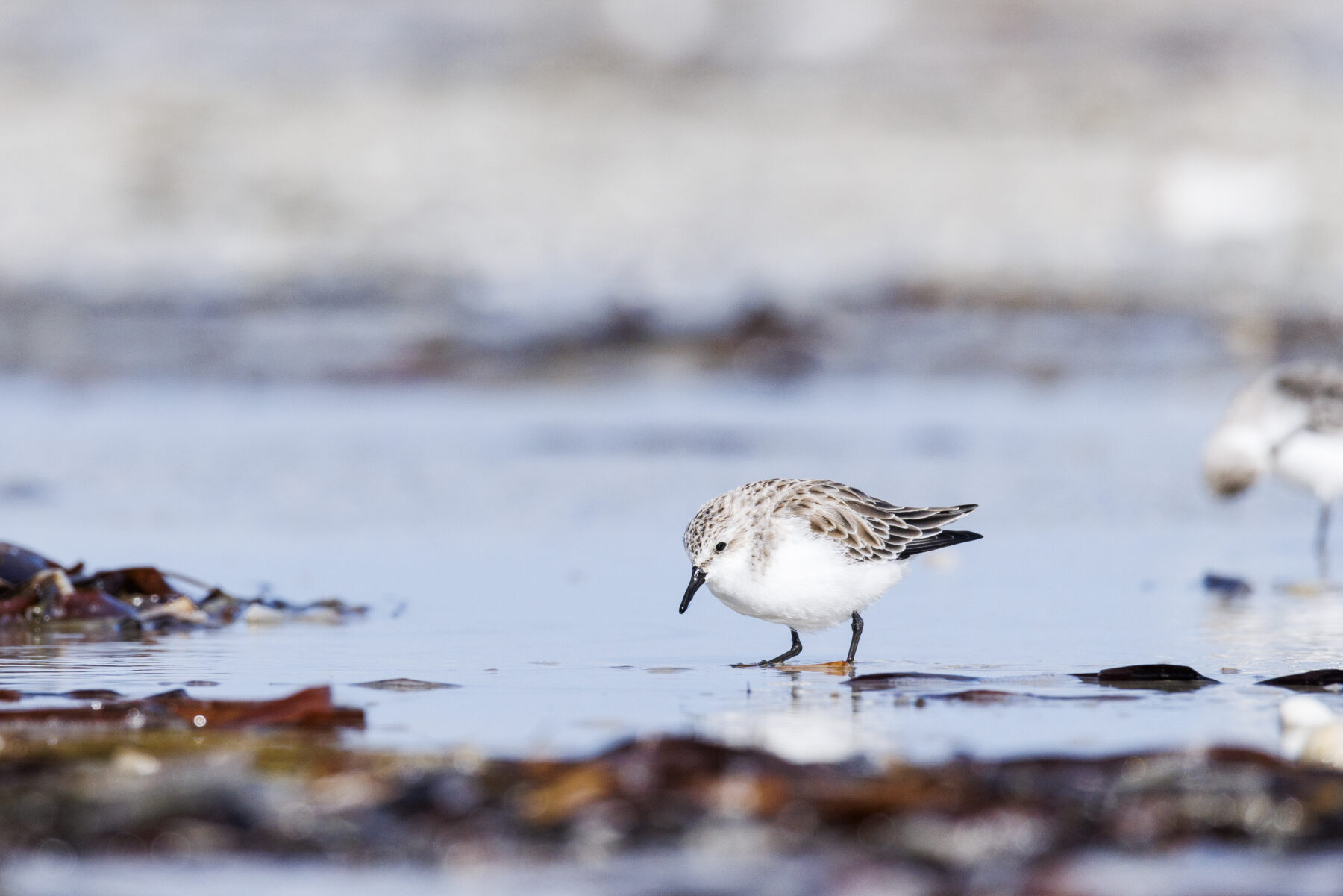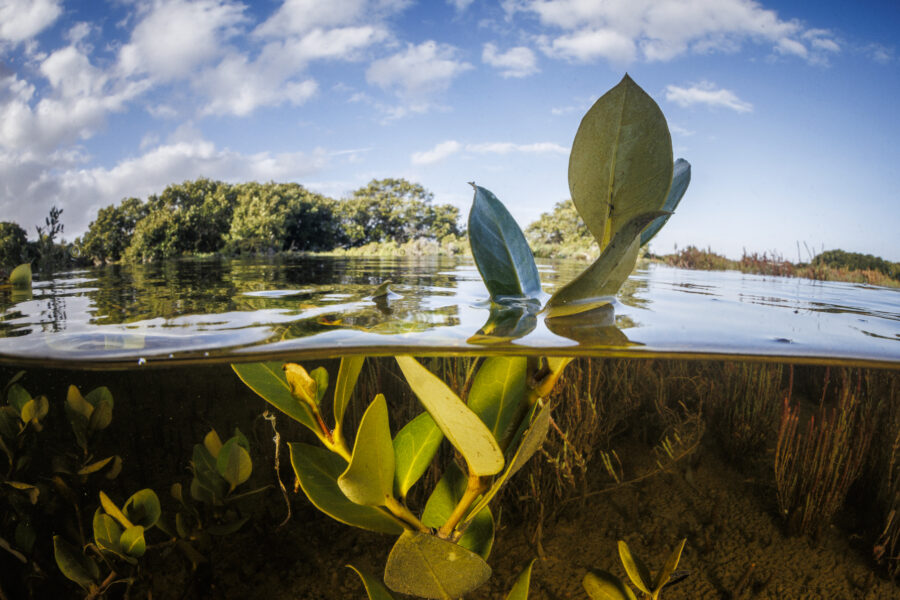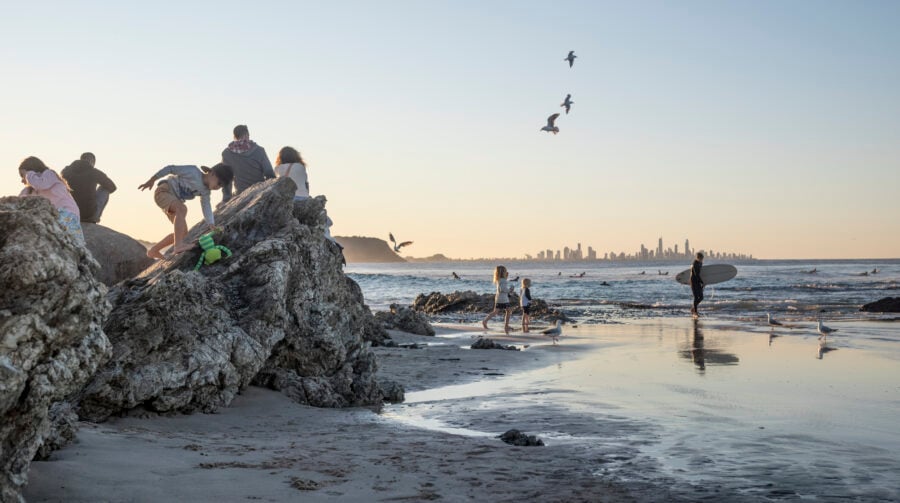Notes from the field: Of mangroves and mudflats

“You’d never think the landscape north of Adelaide hides something as special as the Adelaide International Bird Sanctuary National Park – Winaityinaityi Pangkara,” Alex says.
“Late one afternoon, our guides from The Nature Conservancy, Kylie Moritz and Abby Goodman, promised the perfect spot to photograph mangroves partially submerged at low tide. We’d barely rolled into the gravel car park before I was racing past the corrugated fences of nearby homes (cheered on by a barking kelpie), through the scrub, to lose myself in the most fantastic mangrove forests I’ve ever seen.

“In that afternoon light I explored the clear, shallow flats and deep channels, navigating grey mangrove roots and hardy saplings defying the harsh saline environment. It wasn’t until the next morning, viewing the coastline from the air with a drone, that I grasped the scale of the coastal vegetation here – an expanse of mangroves running parallel with the coast, as far as the eye could see, while also stretching inland.
“At low tide, the water receded for kilometres, giving way to sprawling tidal flats and revealing a banquet
for thousands of shorebirds. Crouching silently while I waited for a flock of red-necked stints to forage in my direction, I was reminded of how the rhythms of intertidal ecosystems are taken to such an extreme in this environment.”





